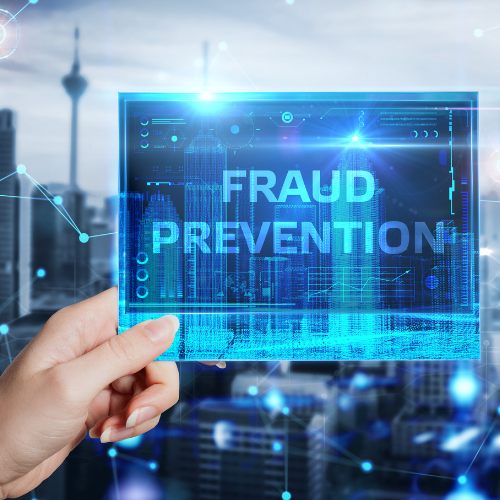Now that nearly all member financial transactions either happen online or on a mobile device, authentication without disclosing too much is a challenge. It wasn’t an issue until recently. You’d ask a member for a driver’s license and compare it to the available reference information. This process doesn’t work well in an online environment.
Enter verifiable credentials. “Verifiable credentials” is the general term for a secure, unhackable digital way for members to prove their identity online. And do so without sacrificing their privacy in the process.
8-Minute Read
Content:
- What are verifiable credentials (VCs)?
- How it can work in the real world
- Digital credentials stop the over-collection of data
- Decentralizing how personal data is controlled
- We’re on our way to a better, more private future
- MemberPass gives you complete confidence in the verifiable digital credential your offer your members
- Want to know more? Arrange a demo MemberPass demo

What are verifiable credentials (VCs)?
You should think of verifiable credentials as the digital equivalent of the paper documents we carry in our wallets to prove who we say we are in the physical world.
VCs have some similarity to these physical ID cards. Individuals can hold digital credentials securely in a digital wallet and share them with a tap of a button. And the personal identification data stays put in the digital wallet. It isn’t exported to a giant database or floating around in the cloud somewhere.
VCs also offer advantages we don’t get with paper records. Physical documents can be lost, stolen, or forged. In contrast, a verifiable credential can never be tampered with, and anyone shown the credential can immediately verify who issued it and to whom it was issued.
Put simply, digital records provide a private, secure, and tamper-free way for individuals to navigate their way around the digital world.
How it can work in the real world
Imagine a recent college graduate named Heather who applied for her first job. When she graduated, Heather’s school issued her diploma as both a paper certificate and as a digital credential. She can store the digital credential on her phone and share it with a potential employer who wants to see a record of her achievements.
Once the information is shared, the employer has verified her degree and will have greater confidence in the hiring decision.
Furthermore, Heather’s privacy is preserved far more than it would have been before digital credentials:
- All the data is decentralized; Heather’s data lives with her.
- There’s no database of student records that could be hacked.
- The employer doesn’t need to keep a file copy of Heather’s transcript to verify her education.
- Her college has no access to the organizations Heather shares her data with.
- Each exchange is private and unique. The school isn’t the one sharing the data.
- Heather can choose what she shares. She can prove she has a college degree without sharing the year she graduated or what her GPA was, for example.
Digital credentials stop the over-collection of data
In the physical world there’s little risk of this happening. For instance, the checker at the door of a club isn’t going to make a copy of an ID or memorize the details. In the digital world, “data over-collection” is a big problem. Often, if the data can be collected, it will be collected.
Digital credentials offer a more sophisticated approach. Individuals control exactly what information they share. This stops data over-collection. Unlike a driver’s license where we show the entire card, a digital version of the document is divisible. We can show only the data points we want to share. We can disclose our age without sharing height, weight, or donor status. This is called, “selective disclosure.”
To take it a step further, digital credentials also support zero-knowledge proofs. These proofs allow an entity to ask questions about data without asking for the data itself. For example, it can be whether a data point is above or below a required threshold without knowing the precise value. Zero-knowledge proof means a bartender could verify a customer is over 21 without seeing their exact age or birth date.
Decentralizing how personal data is controlled
We’ve discussed how digital credentials allow for selective disclosure. Such functionality changes the fundamental dynamics of online data privacy. At present, individuals are often faced with the choice to either trust the service provider to handle their personal data with care or to not engage with the service at all.
With verifiable digital credentials, the user determines how, and with whom, the data is shared. Unlike with today’s huge, centralized customer databases, an organization has no way to extract this information without the individual’s explicit consent. The individuals create their own data flows. No third parties, surveillance applications, or cookie trails are involved.
Contrast this with the federated model of identity, the sign-in system that enables us to log in to websites using our Facebook or Google profiles. Federated identity basically includes any ID system that gets between the two primary parties in a transaction. In these examples, the intermediary tracks user interactions via a virtual cookie crumb trail.
An issuer of a digital credential has no record of where we use the credential or to whom we show it. Going back to our example, a university can issue a proof-of-degree credential which can be shared with prospective employers. The data is shared peer-to-peer, so the university doesn’t know about it. And the employer can assess authenticity without having to contact the university because each credential is cryptographically signed by the issuing authority.
We’re on our way to a better, more private future
While it may be hard to imagine a world where we can digitally prove who we are as easily as we can in the physical world, implementations of this VC technology are already in use.
This means it’s a great time for credit unions to implement verifiable digital credentials like MemberPass. It’s a direct route to provide your members with private, safe, and secure digital experiences.
MemberPass gives you complete confidence in the verifiable digital credential your offer your members
MemberPass digital ID is an unhackable encrypted connection between you and a member. It delivers unmatched safety and security. When members ID themselves with MemberPass, you can be certain they are who they say they are.
As a bonus, with MemberPass in place, all forms of financial fraud are virtually eliminated.
If you haven’t added MemberPass to your credit union, we’d be happy to arrange a personal demo
Seeing is believing. If you want to learn more, please email us to set up your own demo. You can also register to attend a MemberPass webinar or visit us online at www.memberpass.com to find out more.
You should make the fraud-fighting power, security, and convenience of MemberPass digital ID part of every member’s financial profile. The sooner you adopt the program, the sooner your members will enjoy the direct benefits!
Bonifii, a credit union service organization, offers MemberPass. MemberPass proactively protects your members from fraud by using distributed ledger technology, enhanced cryptography, and biometrics to create the most PRIVATE, SAFE, and SECURE omni-channel way for your member to interact with your credit union. Visit www.memberpass.com or email Atull@memberpass.com


